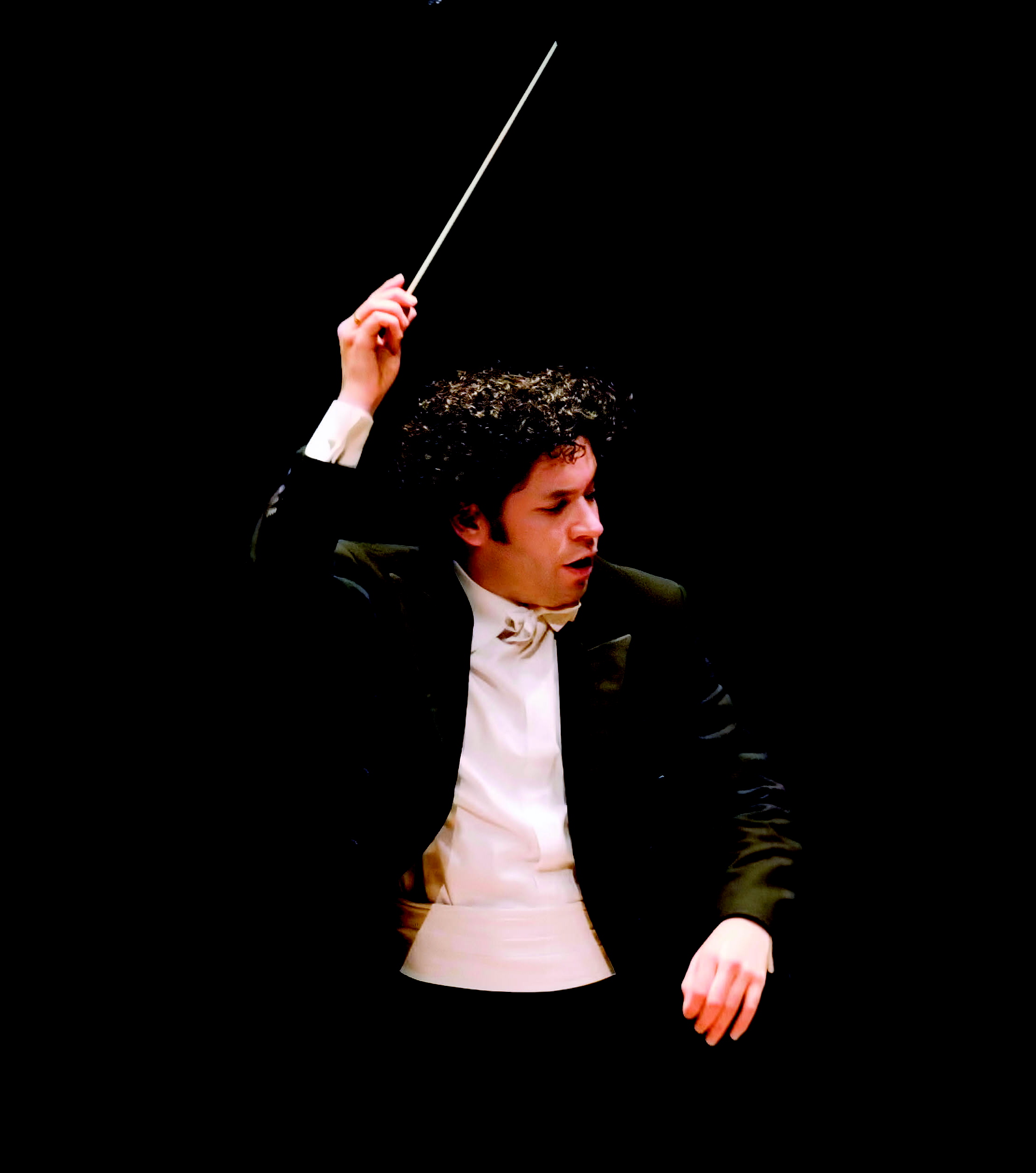Dudamel, Los Angeles Philharmonic deliver thrilling performance in Chicago

Few music director’s tenures are launched with the kind of lavish media blitz and international attention that greeted the 29-year-old Gustavo Dudamel’s ascension to the leadership of the Los Angeles Philharmonic last fall.
The Venezuelan conductor has previously led the Chicago Symphony Orchestra and brought his Simon Bolivar Youth Orchestra to town. But Friday night Dudamel was here with the Los Angeles Philharmonic on their debut tour and the orchestra’s first Chicago appearance in many years.
The L. A. Phil has enjoyed a distinguished roster of music directors from Artur Rodzinski and Otto Klemperer to Carlo Maria Giulini, Andre Previn and Esa-Pekka Salonen.
It’s clear from the bravura performances Friday night at Symphony Center that the out-going Salonen has not only bequeathed a polished, highly virtuosic ensemble to his young colleague, but that the L.A. Phil is playing with remarkable fire under its new music director. Rarely does one see an American ensemble bring such physical intensity to their playing with string players swaying to the music—principal violist Carrie Dennis practically leaping off her chair—- with an unbridled excitement that was as thrilling to watch as it was to hear.
The orchestra, currently on an eight-city tour, is strong across all sections with lean yet brilliant brass and agile, dazzling strings most notable. Woodwinds are fluent yet perhaps lack that last bit of distinctive personality, but on the whole the Philharmonic is clearly a bravura ensemble that is playing with a new sense of discovery under their charismatic young maestro.
Nabbing John Adams as the orchestra’s new composer-in-residence clearly doesn’t hurt Dudamel’s inaugural season either and Friday brought the Chicago premiere of Adams’ first work for the orchestra, City Noir, which debuted last fall in L.A.
Inspired by film noir of the late 1940s and the soundtrack stylings of the same, the work—like Adams’ Harmonielehre—is a symphony in all but name, with three sections painting the languid atmosphere and enticingly sleazy noir milieu.
Among Adams’ great gifts is his ability to draw un-self-consciously from popular culture and musical genres, bridging classical concert works with the dynamism and rhythmic punch of rock and jazz. City Noir thrives on this vitality with its deserted-street nocturnal languor and prominent alto saxophone solos.
City Noir possesses the scoring audacity and whirlwind energy of some of Adams’ finest works. But even for this Adams admirer, at thirty minutes the work tends to sprawl, with the first movement especially losing the thread. Overall, it’s hard to avoid feeling that City Noir would be twice as good if it were one third as long.
That said Dudamel led a bracing, propulsive performance with instrumental lines clear even in Adams’ most riotous contrapuntal moments. The L.A. Phil members covered themselves in glory with outstanding contributions by trumpeter Donald Green, trombonist James Miller and, especially, Timothy McAllister’s evocative and bravura alto sax playing.
Tchaikovsky’s Symphony No., 6 may seem like a rather conservative choice for this Chicago program, but perhaps the Mahler that is also being played on this tour was felt to be a case of bringing Austrian coals to Newcastle.
Whatever the case, Dudamel’s brand of individual music-making was richly convincing in a powerful performance. There were some touches that flirted with idiosyncrasy—the spaciously moulded introduction (with wonderfully lugubrious bassoon playing) and the overdone rests. But for the most part, Dudamel’s impassioned direction succeeded in scraping the accumulated rust off of this thrice-familiar warhorse with startling bite and immediacy.
The Philharmonic has a dark, burnished European sonority that suits this repertoire, yet rarely will one hear textures as transparent and finely honed as here, even with the orchestra in full cry. Not a bar sounded routine with the long drama of the opening movement charted with precision and attentive detailing, and an easy natural lilt in the waltz-like second movement. The brassy march had no lack of excitement—-engendering the usual premature applause—yet avoided over-the-top bombast and was kept in scale.
The performance really came to the fore in the tragic finale, with the music deeply impassioned yet never overwrought or lachrymose, Dudamel’s firm bass line keeping things grounded. The despairing coda was beautifully played and directed, the conductor artfully holding the silence for a good minute before allowing the applause to begin.
Repeated ovations brought Dudamel out for repeated bows and two encores: a warm, richly eloquent Intermezzo from Puccini’s Manon Lescaut and a light airy take on the Waltz from Leonard Bernstein’s Divertimento.